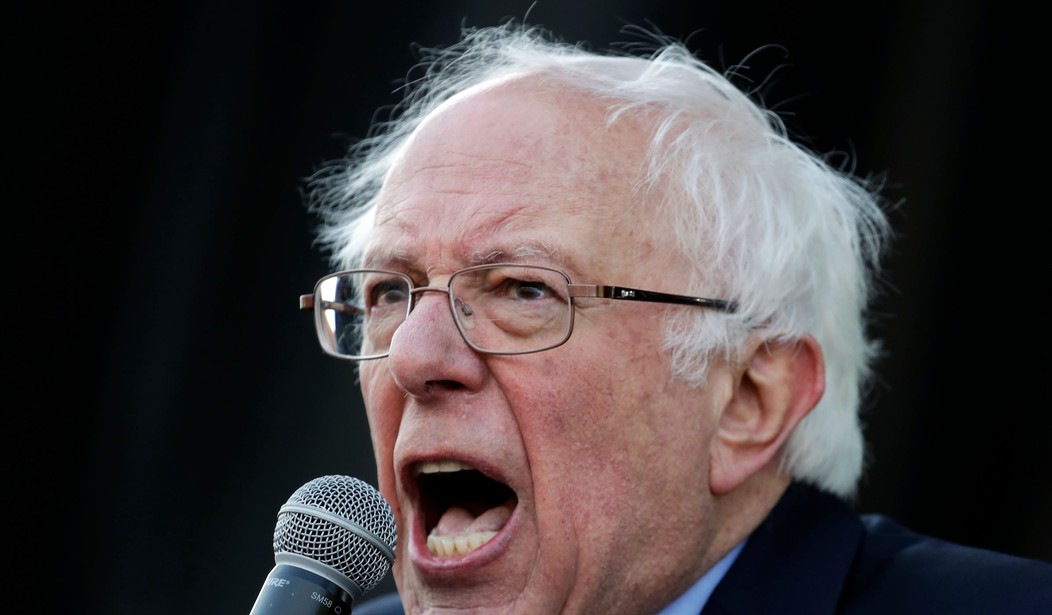Right on the heels of our piece about Alexandria Ocasio Cortez and the cost of "Medicare for All" -- a.k.a. single-payer, government-run healthcare -- the Mercatus Center at George Mason University published a rigorous analysis performed by a former Social Security and Medicare trustee that pegged the price tag of this left-wing dream at $32.6 trillion over ten years. (Measuring sticks: The US federal government spent $4 trillion total in 2017, and the entire US economy was a bit shy of $19 trillion in 2016). Immediately, figures on the Left began dismissing and distorting its findings, with a popular talking point linking Mercatus to the Koch brothers, who help fund the institution. Such rote denunciations emanated from the center-Left to the hard-Left:
Koch-funded libertarian think tank study trashes @SenSanders health care plan. This is news? Why is @AP reporting this so credulously?https://t.co/0Ot499TS4y
— Kirsten Powers (@KirstenPowers) July 30, 2018
Even a Koch brothers-funded attempt to trash Medicare for All can't hide the truth: Medicare for All will lead to a $2 TRILLION REDUCTION in national health expenditures over 10 years.
— Bernie Sanders (@SenSanders) July 30, 2018
That’s trillion with a “T.” https://t.co/eOfd29cDoa
We'll deal with Bernie's "$2 trillion reduction!" claim momentarily, but let's start with the "Koch trash!" line of argument. Within the Associated Press' write-up of the Mercatus report, authored by Charles Blahous, are these two important sentences: "Sanders' office has not done a cost analysis, a spokesman said. However, the Mercatus estimates are within the range of other cost projections for Sanders' 2016 plan." Not only has Sanders' office not done its own serious accounting for the Senator's signature policy objective, the maligned "Koch-funded" piece of propaganda...closely reflected other academic estimates of single payer's price tag. Indeed, in our post yesterday, we cited a study by the left-leaning Urban Institute that ran the math and came up with a nearly identical cost projection -- via the Washington Post:
The government’s price tag would be astonishing. When Sen. Bernie Sanders (I-Vt.) proposed a “Medicare for all” health plan in his presidential campaign, the nonpartisan Urban Institute figured that it would raise government spending by $32 trillion over 10 years, requiring a tax increase so huge that even the democratic socialist Mr. Sanders did not propose anything close to it.
Recommended
When right-leaning and left-leaning think tanks produce strikingly similar calculations, perhaps we should sit up, pay attention, and take the results seriously. As for the "savings" canard, the Urban Institute analysis guesstimated that BernieCare would increase overall costs by more than $6 trillion over a decade, so how can Sanders claim that the Mercatus numbers point to a multi-trillion-dollar decrease? Economist Brian Riedl of the Manhattan Institute, an expert on these matters, explains the context: "The claims of lower total economy-wide health savings only [materialize] because Blahous charitably accepted the Bernie assumption that we can lower all payment rates to Medicare payment rates," Riedl tells me. In the text of the report, "[Blahous] points out that really we cannot do that {achieve those savings), and the true cost would be about $6 trillion more," Riedl continues. In other words, a longtime federal administrator of precisely these major government programs took Sanders' unrealistic assumptions at face value in his calculations, then explained why they were unrealistic (they would crush doctors and hospitals with unsustainably small reimbursement rates).
When Blahous applied his institutional knowledge to the math, Sanders' fanciful savings evaporated, and a higher tab of roughly $4 trillion over ten years emerged. And notice -- again -- the relatively similar projections from both Blahous and the Urban Institute. Riedl also notes that both entities' analysis align closely with extrapolations from state-level estimates from Vermont and California, where single-payer schemes were abandoned by left-wing legislatures due to totally untenable costs. We mentioned in our breakdown of Ocasio Cortez's magical thinking that she did not propose anything even remotely approaching a plan to pay for all of this. Answering that bell, and using broadly agreed-upon numbers, Riedl created a menu of options for filling the budget hole. Its contents are remarkable. After factoring in state-level savings from the imposition of a federal single-payer regime, the math demonstrates that the new system would require a tax increase of ten percent of US GDP. How could we get there? Mix and match the following proposals to add up to hit that ten percent figure:
The Mercatus Study -- like others -- shows that "Medicare for All" would require a federal tax hike of roughly 10% of GDP even after capturing state govt. savings.
— Brian Riedl (@Brian_Riedl) July 30, 2018
But capturing the savings to families into a "single-payer tax" is not easy -- which is why Sanders comes up short pic.twitter.com/Etfjk22sQc
Perhaps the most efficient way to achieve that would be to combine the top three revenue generators listed: Raise the payroll tax (paid for by workers and employers) by ten percentage points for everyone, impose a brand new 20 percent national VAT/sales tax, and hike income tax rates across the board by ten percentage points. Not one of those three; all of those three. That is an extraordinary, radical, humongous package of tax increases on virtually all Americans. Please notice that cobbling together a string of more populist "fair share" nibblings that tend to poll better would result in woefully insufficient revenues. Please also notice this analysis' fine print that these calculations do not even attempt to account for the negative economic impact of profoundly anti-growth policies.
Raise your hand if you believe that, say, a 20 percent spike in corporate tax rates would have no deleterious effects on hiring, employment, or revenues. Anyone? Anyone? Ocasio Cortez? The upshot is that unless you are clueless or a liar, there is no politically-feasible way to pay for this explosion of spending -- all to finance a regime under which 156 million Americans would lose their existing plans, and European-style rationing and R&D limitations would harm health outcomes. I'll leave you with this blistering Kennedy monologue adding additional perspective:
.@KennedyNation on new study that says Bernie Sanders' 'Medicare for all' bill is estimated to cost $32.6 trillion: "Even if you doubled tax collections from individuals and corporations... that still doesn't cover the tab." https://t.co/bP7HPXj5oD pic.twitter.com/vDtcKjMlKc
— FOX Business (@FoxBusiness) July 31, 2018
UPDATE - A few more points about the fantastical left-wing claim that the Mercatus study proves healthcare spending will fall under single-payer: First, this claim rests on the assumption that major slashes in reimbursement rates will have zero affect on providers or access:
[Believing the "savings" canard means the government would] force every doctor and hospital in America to accept Medicare reimbursement rates for all patients — these are 40 percent lower than the rates paid by private insurance — while assuming that this would have absolutely no effect on their capacity or willingness to provide services.
It also assumes that unlike the vast majority of most current Medicare recipients, Americans won't need supplemental out-of-pocket coverage, which would massively boost the overall health spending tab:
That means that even if the new Medicare worked exactly the same way for everyone, it would cost the 33 trillion + another 30-40% in supplemental coverage.
— (((AG))) (@AG_Conservative) July 31, 2018
The current Medicare administrator says that applying that (unsustainable) programs's model to the entire country would result in a reality that's closer to "Medicare for None." Finally, the new study provides a range of estimates, based on more realistic payment scenarios, and finds that $32.6 trillion is very likely a low ball projection. The real number would likely be trillions higher:
Lets note even the study shows this...just that people were picking and choosing which estimate to use. Here is the estimate with current payor payment rates...note it is MUCH HIGHER in total cost. pic.twitter.com/UaivB9sms7
— Pradheep J. Shanker, M.D., M.S. (@Neoavatara) July 31, 2018
























Join the conversation as a VIP Member